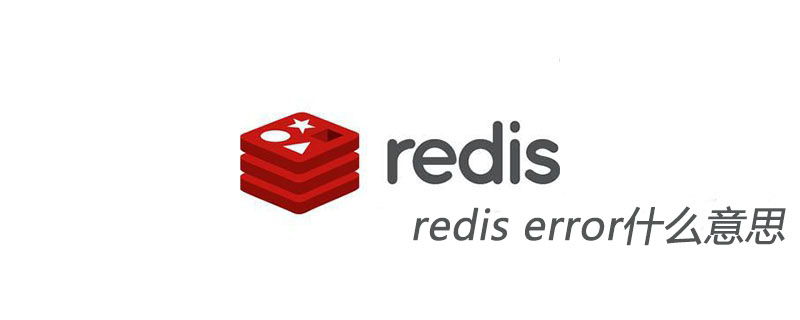Configuring Redis
1. Add Redis dependency
<dependency>
<groupId>org.springframework.boot</groupId>
<artifactId>spring-boot-starter-data-redis</artifactId>
</dependency>2. Add redis configuration information
redis: host: 127.0.0.1 port: 6379 database: 0 password: # 连接超时时间 timeout: 10s
Configure AOP
1. Custom annotations
/**
* 防止表单重复提交注解
*/
@Target(ElementType.METHOD) // 注解的作用目标为方法
@Retention(RetentionPolicy.RUNTIME) // 注解的保留期限为运行时
public @interface PreventDuplicateSubmission {
/**
* 时间(s)
*/
int time() default 3;
}2. AOP aspects
@Aspect // 表明这是一个切面类
@Component // 表示这是一个Bean
public class DuplicateSubmissionAspect {
@Autowired
private StringRedisTemplate stringRedisTemplate;
// 定义切入点,即标注了@PreventDuplicateSubmission注解的方法
@Pointcut("@annotation(com.example.demo.annotation.PreventDuplicateSubmission)")
public void preventDuplicateSubmission() {
}
@Around("preventDuplicateSubmission()")
public Object around(ProceedingJoinPoint joinPoint) throws Throwable {
ServletRequestAttributes attributes = (ServletRequestAttributes) RequestContextHolder.getRequestAttributes();
assert attributes != null;
HttpServletRequest request = attributes.getRequest();
String requestURI = request.getRequestURI();
String key = requestURI + ":" + JSON.toJSONString(request.getParameterMap());
if (stringRedisTemplate.hasKey(key)) { // 如果Redis中已存在该请求
throw new RuntimeException("请勿重复提交");
}
// 获取注解的参数
PreventDuplicateSubmission formSubmission = ((MethodSignature) pjp.getSignature()).getMethod().getAnnotation(PreventDuplicateSubmission.class);
int time = formSubmission.time();
// 设置请求的key和value,有效期为3秒
stringRedisTemplate.opsForValue().set(key, "1", time, TimeUnit.SECONDS);
return pjp.proceed();
}
}In the above code, we use the StringRedisTemplate provided by Spring Boot. To connect to Redis, you can inject the object directly through the @Autowired annotation. In the @Around annotation, we use the stringRedisTemplate.hasKey() method to check whether the request already exists in Redis. If it exists, an exception is thrown; if it does not exist, the stringRedisTemplate.opsForValue().set() method is used to set the request. The request is stored in Redis and the expiration time is set to 3 seconds.
Notes
You need to pay attention to the following points when using Redis storage requests:
Redis needs to be deployed separately. Do not deploy Redis and the application in the same on a machine.
The performance of Redis may be reduced compared to the memory storage method, and it needs to be tested and optimized based on the actual situation.
If an exception occurs in Redis, it may affect the normal operation of the application, and corresponding fault-tolerance mechanisms need to be added.
Redis storage requests need to take into account concurrency issues, which can be solved using Redis distributed locks.
If the application requires frequent Redis operations, it may cause the performance of Redis to decrease. Therefore, you need to pay attention to optimizing the configuration and use of Redis, such as using Redis Pipeline and other technologies. Improve the performance of Redis.
The above is the detailed content of How SpringBoot uses AOP+Redis to prevent repeated submission of forms. For more information, please follow other related articles on the PHP Chinese website!
 es和redis区别Jul 06, 2019 pm 01:45 PM
es和redis区别Jul 06, 2019 pm 01:45 PMRedis是现在最热门的key-value数据库,Redis的最大特点是key-value存储所带来的简单和高性能;相较于MongoDB和Redis,晚一年发布的ES可能知名度要低一些,ES的特点是搜索,ES是围绕搜索设计的。
 一起来聊聊Redis有什么优势和特点May 16, 2022 pm 06:04 PM
一起来聊聊Redis有什么优势和特点May 16, 2022 pm 06:04 PM本篇文章给大家带来了关于redis的相关知识,其中主要介绍了关于redis的一些优势和特点,Redis 是一个开源的使用ANSI C语言编写、遵守 BSD 协议、支持网络、可基于内存、分布式存储数据库,下面一起来看一下,希望对大家有帮助。
 实例详解Redis Cluster集群收缩主从节点Apr 21, 2022 pm 06:23 PM
实例详解Redis Cluster集群收缩主从节点Apr 21, 2022 pm 06:23 PM本篇文章给大家带来了关于redis的相关知识,其中主要介绍了Redis Cluster集群收缩主从节点的相关问题,包括了Cluster集群收缩概念、将6390主节点从集群中收缩、验证数据迁移过程是否导致数据异常等,希望对大家有帮助。
 Redis实现排行榜及相同积分按时间排序功能的实现Aug 22, 2022 pm 05:51 PM
Redis实现排行榜及相同积分按时间排序功能的实现Aug 22, 2022 pm 05:51 PM本篇文章给大家带来了关于redis的相关知识,其中主要介绍了Redis实现排行榜及相同积分按时间排序,本文通过实例代码给大家介绍的非常详细,对大家的学习或工作具有一定的参考借鉴价值,希望对大家有帮助。
 详细解析Redis中命令的原子性Jun 01, 2022 am 11:58 AM
详细解析Redis中命令的原子性Jun 01, 2022 am 11:58 AM本篇文章给大家带来了关于redis的相关知识,其中主要介绍了关于原子操作中命令原子性的相关问题,包括了处理并发的方案、编程模型、多IO线程以及单命令的相关内容,下面一起看一下,希望对大家有帮助。
 一文搞懂redis的bitmapApr 27, 2022 pm 07:48 PM
一文搞懂redis的bitmapApr 27, 2022 pm 07:48 PM本篇文章给大家带来了关于redis的相关知识,其中主要介绍了bitmap问题,Redis 为我们提供了位图这一数据结构,位图数据结构其实并不是一个全新的玩意,我们可以简单的认为就是个数组,只是里面的内容只能为0或1而已,希望对大家有帮助。
 实例详解Redis实现排行榜及相同积分按时间排序功能的实现Aug 26, 2022 pm 02:09 PM
实例详解Redis实现排行榜及相同积分按时间排序功能的实现Aug 26, 2022 pm 02:09 PM本篇文章给大家带来了关于redis的相关知识,其中主要介绍了Redis实现排行榜及相同积分按时间排序,本文通过实例代码给大家介绍的非常详细,下面一起来看一下,希望对大家有帮助。
 redis error什么意思Jun 17, 2019 am 11:07 AM
redis error什么意思Jun 17, 2019 am 11:07 AMredis error就是redis数据库和其组合使用的部件出现错误,这个出现的错误有很多种,例如Redis被配置为保存数据库快照,但它不能持久化到硬盘,用来修改集合数据的命令不能用。


Hot AI Tools

Undresser.AI Undress
AI-powered app for creating realistic nude photos

AI Clothes Remover
Online AI tool for removing clothes from photos.

Undress AI Tool
Undress images for free

Clothoff.io
AI clothes remover

AI Hentai Generator
Generate AI Hentai for free.

Hot Article

Hot Tools

MantisBT
Mantis is an easy-to-deploy web-based defect tracking tool designed to aid in product defect tracking. It requires PHP, MySQL and a web server. Check out our demo and hosting services.

SecLists
SecLists is the ultimate security tester's companion. It is a collection of various types of lists that are frequently used during security assessments, all in one place. SecLists helps make security testing more efficient and productive by conveniently providing all the lists a security tester might need. List types include usernames, passwords, URLs, fuzzing payloads, sensitive data patterns, web shells, and more. The tester can simply pull this repository onto a new test machine and he will have access to every type of list he needs.

PhpStorm Mac version
The latest (2018.2.1) professional PHP integrated development tool

Dreamweaver CS6
Visual web development tools

Zend Studio 13.0.1
Powerful PHP integrated development environment






